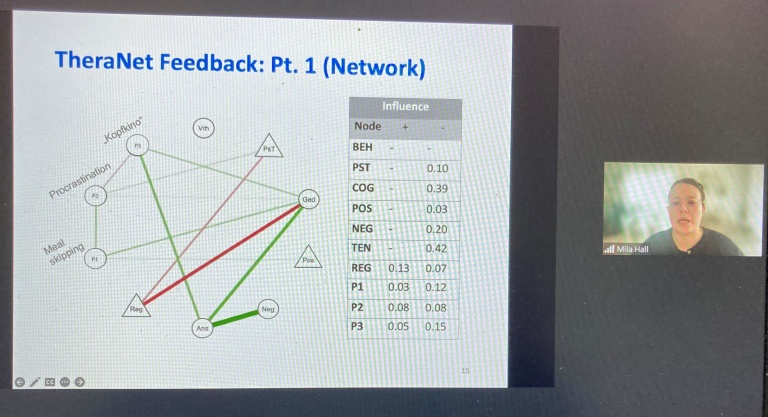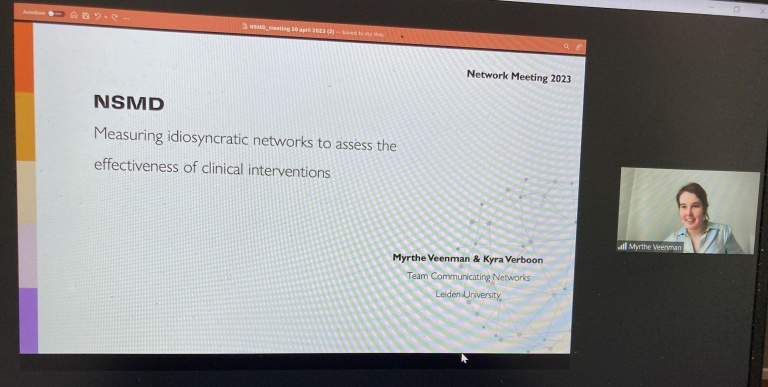For the sixth time, the NSMD consortium met online, for a 'network meeting'. Colleagues from Leiden University organised this edition, which focused on the question whether an idiosyncratic network approach is possible in treatment processes in mental health. Four presentations offered food for thought.

'Idiosyncratic' sounds complicated (and in the context of network analysis it is), but it means no more than 'unique to an individual'. For example, an idiosyncratic habit is a trait that not everyone has. So an 'idiosyncratic network' is a network of one individual, which visualises the relationship and interactions between symptoms. One of the aims of the NSMD consortium is to investigate whether such an individual network can help improve psychological treatments. For instance, does it offer more insight into changes people undergo through therapy, or the lack thereof?

Inspiring presentations
Mila Hall from the University of Osnabrück is researching the use of personalised questionnaires and feedback based on individual network models in psychotherapy. She gave a comprehensive, inspiring presentation on this project, TheraNet. Erik Giltay, psychiatrist affiliated to Leiden University, presented his research entitled; 'Modelling idiographic networks in depression using dynamic time warping (DTW)'. One of his encouraging conclusions was that statistics is quite possible when the sample size is 1, i.e. when one individual is involved. And finally, the PhD students from the NSMD Communicating Networks team, Myrthe Veenman and Kyra Verboon, gave a nice presentation on their research so far. Questions that arise here (and in general with this type of research) are; how do you strike a balance between the number of measurements needed to build a network and the burden on the participant? And is it ethical to feedback an individual network model to someone if we don't yet know whether the network approach adds value? To be continued!